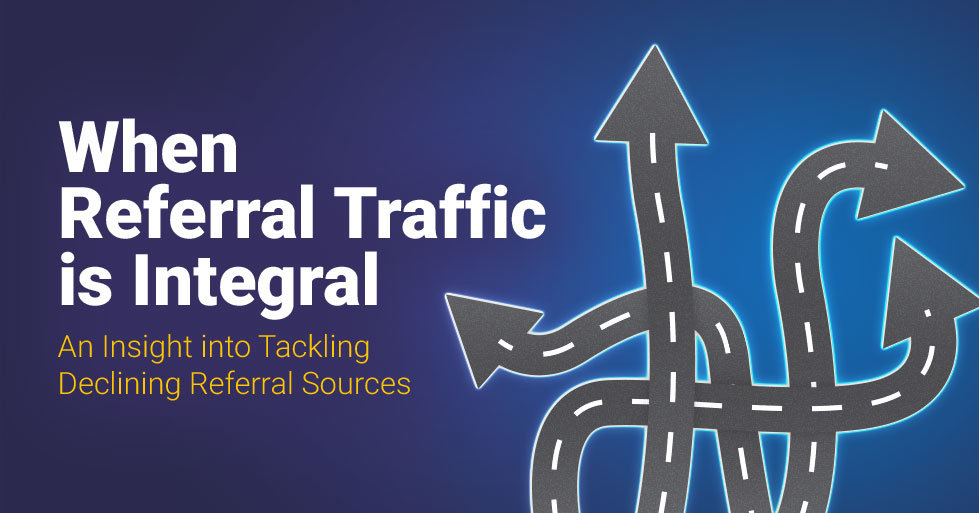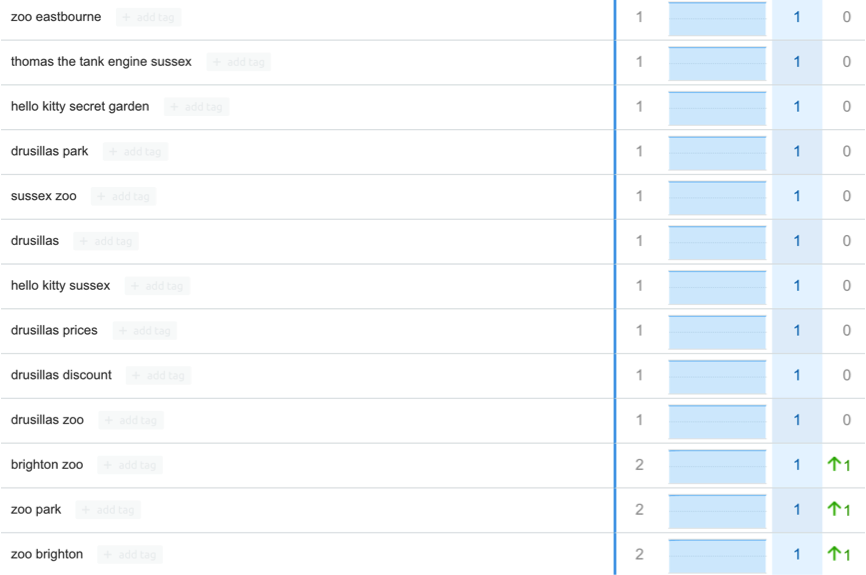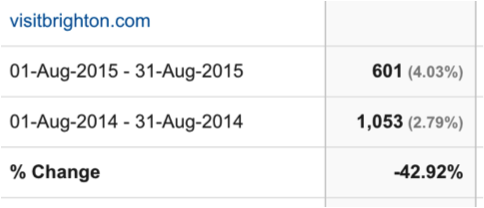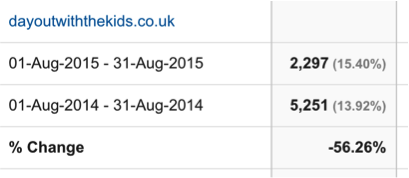Marketing managers and directors of companies care about top-line analytics. Especially when a year on year decrease in traffic becomes a reality. As an SEO consultant or agency, you are the first person to turn to in these situations and are relied upon to find a solution. We found ourselves in this position and had to find logical reasons and solutions, fast. So who am I to tell you how to deal with what could be a pretty painful situation for any SEO?

Well, my name is Tom Clark and I run Convert Digital. We have to deal with all sorts of traffic issues from penalties to start-ups who don’t even know where to begin on the journey of online business.
What you will learn:
- How to identify potential causes for a year on year decline in overall traffic and organic traffic
- How to analyse the performance of referral traffic
- How to hone efforts on higher reward activities
- How to boost both referral and organic traffic through reigniting relationships online
Before you can find a solution and create a strategy for seeing year on year organic growth next year, you must first open up Google analytics and your ranking tracking tool. Your role as an SEO should encompass a command over analytics, as commonly the marketing department and directors in a company do not have the expertise or time to have a detailed knowledge of the tool.
As a result, an organic traffic issue such as a Google penalty could easily become their self-diagnosed culprit. This is where you take a look at both the rankings and the Google analytics to find some potential reasons for this decline in traffic. If rankings have taken a dive, then you need to be honest and upfront about this with the client. But what if rankings are stable?
First off, taking a look at the rankings showed that it was stable on this front, when comparing year on year.

In fact many rankings had actually improved, including long-tail rankings, so our first thought was how could organic traffic be lacking?
Are we to blame for organic traffic being down 10% when comparing August 2015 to August 2014?
Slightly baffled at first by the steady rankings, but declining organic traffic, we decided to analyze the prospective customer journey from Google search to entering the gates of the zoo.
The visitors we are trying to entice to the zoo are one of two types of visitors:
- Visitors who are aware of the zoo – these visitors go on the website to find opening times, potentially check to see if ticket prices have changed and call in to see if any special events are going on.
- The second type of potential visitor is searching for ‘things to do in Sussex/Brighton/East Sussex’ and child friendly activities in Sussex. This type of visitor is possibly not yet aware of the zoo and is highly influenced by the aggregator sites that offer a lot of advice for family-friendly activities in your area.
Being one of the biggest family attractions in the area, we were pretty confident our client would be listed in some format on most of the local tourism/aggregator sites. But what if our client’s visibility on those sites has decreased since this time last year? If this was the case, then the result would be less people searching for our clients company name in Google, once they have mulled over their options the day before.
We had also noticed that the Google ‘My Business’ listing was also getting a lot more visibility for all sorts of keywords with the modifier ‘Brighton’ or ‘East Sussex’, when compared to last year. What does this mean for organic traffic?


Essentially, when a Google My Business listing gets a higher visibility than usual, the result is that some potential website visitors will get all the necessary information from the listing and not click through to the website. With the phone number, reviews and opening times all visible from the my business listing, visiting the website is not essential unless you want to purchase tickets on the website.
At this stage we already had two culprits for why the organic traffic has seen a decrease.
a) Referral Traffic Sources as part of the blame for a decrease in traffic/organic traffic
When we looked at the referral traffic sources (with dates set to Aug 2015 compared to Aug 2014) we could quickly see a lot of the best traffic driving sites had sent far less this year. As briefly mentioned earlier, this impacts the number of people who perform a branded search in Google after looking into their options and checking out the site previously.
b) How to combat declining referral traffic
When attempting to address the decline in referral traffic, you have to understand if any given linking site has experienced a growth or decline in organic traffic since last year. I was able to identify that the first site we were focusing on (daysoutwiththekids.co.uk) had slightly declined since Aug 2014, but not enough to warrant sending less than half the referral traffic when comparing Aug 2014 to Aug 2014.

If the linking site’s organic traffic had massively dropped since last year, this could also shape whether our client should consider continuing advertising through their site, or negotiating the fees based on these findings.
We also found instances like visitbrighton.com, where the referring site had grown really well organically since last year, but the traffic to our client’s site had diminished. This is a great area of opportunity, as you then need to focus on how you can get greater visibility on that site.
It was at this point that we started to discuss all the potential areas of opportunity with the Zoo’s marketing manager. We began to develop a simple Google doc with all of the sites/pages on sites worth focusing attention on. We gave really actionable directions for how the visibility on each site could be increased. Of course this could mean an increased advertising spend on some of those sites, but the outcome would be very beneficial.
As we went through this process we noticed some common themes for why the referring traffic had declined:
- Our client had not provided any new information to the tourism sites since last year, so the editor of the tourism site had naturally let the old content slide deeper into the site where there are less visitors.
- Voucher code deals arranged with sites like tesco.com and moneysavingexpert had expired, so the page had been removed.
With a few upcoming events looming up surrounding Halloween at the zoo and Christmas events, this was the perfect time to take action and provide new value to these once beneficial referring sites.
We also used Google search rankings to help shape which sites should get priority attention. For example, a site ranking well for ‘Things to do in Sussex’ or Kids days out in Sussex’ will be attracting our ideal prospective customers.
Wrapping it up
Implementing this strategy across tens to hundreds of linking domains will have a substantial impact on the overall and organic traffic. Covert Digital will be working closely with zoo’s marketing department to measure the impact of increased visibility over the coming months.
Disclosure
This is not a paid post and cognitiveSEO didn’t make any kind of agreement with the author. This is an analysis of Tom Clark, written and documented by himself.
About the author

Tom Clark is the director of Convert Digital a small SEO and PPC agency in Brighton, UK. Convert Digital put an emphasis on tailored digital marketing campaigns, with an emphasis on onsite SEO and link building.

 Site Explorer
Site Explorer Keyword tool
Keyword tool Google Algorithm Changes
Google Algorithm Changes

Leave a Reply!